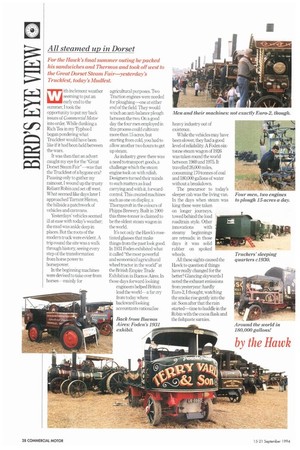MAY ith inclement weather seeming to put an early end to
Page 30

If you've noticed an error in this article please click here to report it so we can fix it.
the summer, I took the opportunity to put my back issues of C,ammerrial Motor into order. While dunking a Rich Tea in my Typhoo I began pondering what Truckfest would have been like if it had been held between the wars.
It was then that an advert caught my eye for the "Great Dorset Steam Fair"—was that the Truckfest of a bygone era? Pausing only to gather my raincoat, I wound up the trusty Reliant Robin and set off west. What seemed like days later I approached Tan-ant Hinton, the hillside a patchwork of vehicles and caravans.
Yesterdays' vehicles seemed ill at ease with today's weather: the mud was ankle deep in places But the roots of the modern truck were evident. A trip round the site was a walk through history, seeing every step of the transformation from horse power to horsepower.
In the beginning machines were devised to take over from horses—mainly for agricultural purposes. Two Traction engines were needed for ploughing—one at either end of the field. They would winch an anti-balance plough between the two. On a good day the four men employed in this process could cultivate more than 15 acres, but starting from cold, you had to allow another two hours to get up steam.
As industry grew there was a need to transport goods, a challenge which the steam engine took on with relish. Designers turned their minds to such matters as load carrying and with it, forwardcontrol. This created machines such as one on display, a Thornycroft in the colours of Phipps Brewery. Built in 1900 this three-tonner is claimed to be the oldest steam wagon in the world.
It's not only the Hawk's rosetinted glasses that make things from the past look good. In 1931 Foden exhibited what it called "the most powerful and economical agricultural wheel tractor in the world" at the British Empire Trade Exhibition in Buenos Aires. In those days forward-looking engineers helped Britain lead the world—a far cry from today where backward looking accountants rationalise
heavy industry out of existence.
While the vehicles may have been slower, they had a good level of reliability. A Foden sixtonne steam wagon of 1926 was taken round the world between 1969 and 1975. It travelled 26,000 miles, consuming 170 tonnes of coal and 180,000 gallons of water without a breakdown.
The precursor to today's sleeper cab was the living van. In the days when steam was king these were taken on longer journeys, towed behind the load roadtrain style. Other innovations with steamy beginnings are retreads: in those days it was solid rubber on spoked wheels.
All these sights caused the I lawk to question if things have really changed for the better? Glancing skywards I noted the exhaust emissions from yesteryear: hardly Euro-2, I thought, watching the smoke rise gently into the air. Soon after that the rain started—time to huddle in the Robin with the cocoa flask and the fishpaste sarnies.
































































































